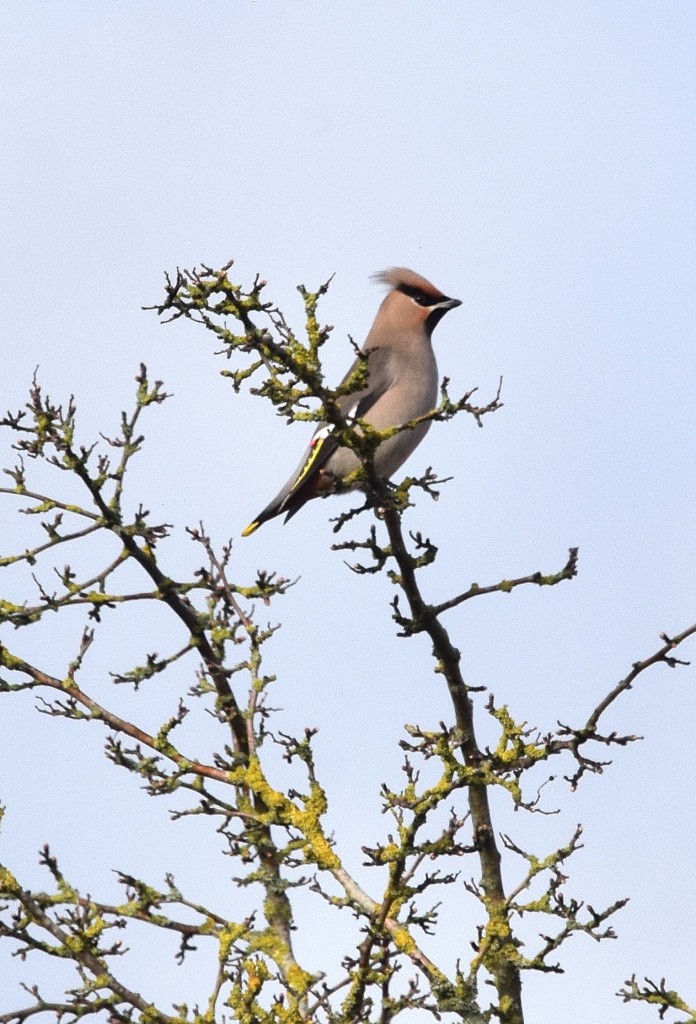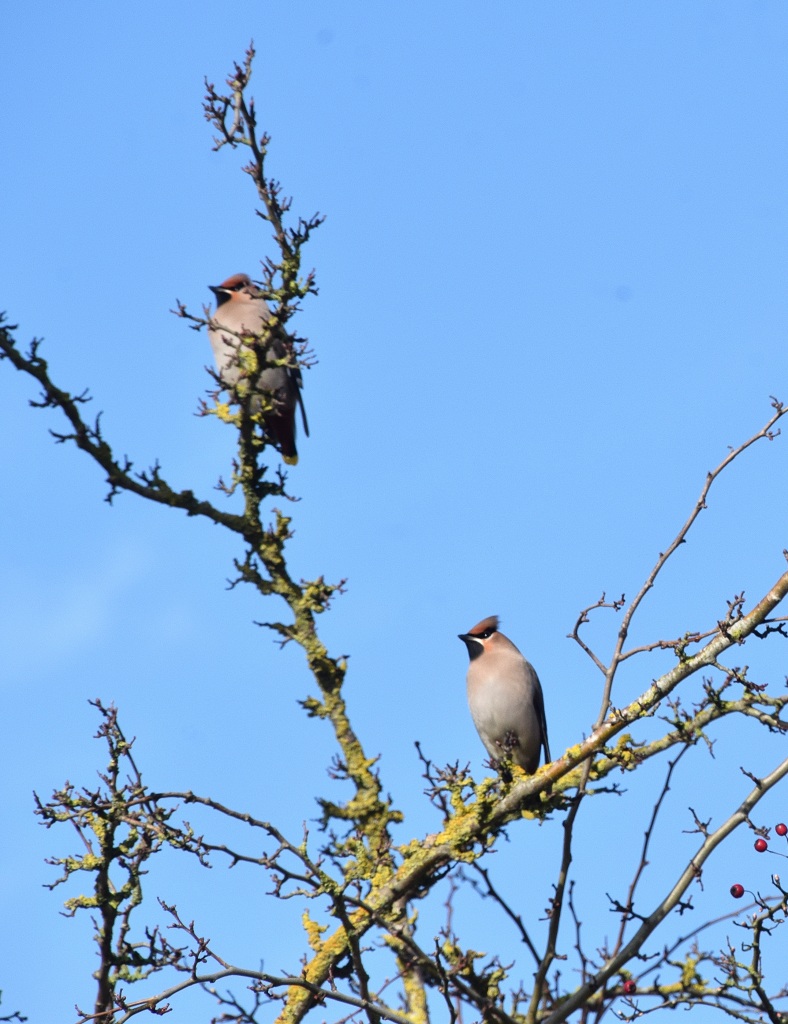My motivation for local birding is currently at an all time low, unless something new and different thrusts itself outward, but it would hardly be credible to have gone through the current winter without observing any Waxwings. The well-documented, national Scandinavian berry bandit invasion took its time to reach my home county (see here), but there have been frequent and widespread sightings through this year’s first two months. I myself dipped them three times until this morning, when I was at last successful.
The issue with these birds in my view is they are difficult to twitch, being most usually mobile around wide feeding circuits. In other words, once you get there they’ve gone. I have been occupied with other interests and extra work shifts recently, and so have not found the time or urge to wait around in residential settings for them to come round again. With the hopefully more reliable groups I carefully selected, first I failed to connect in January with one just outside Thame; then another in north Oxford, close by Port Meadow. More recently a nine-strong flock has been reported fairly regularly by my birding colleague Andy and others in two locations in north Abingdon. I failed to find them again at the first attempt, but somehow felt lucky on this cold and clear morning.
My hunch about today proved to be not unfounded. Walking away from my car at the junction of Dunmore Road and Parsons Mead, close to where I lived for 14 years between 1986 and 2000, I saw a photographer on the far side of what had then been Abingdon’s northern outer ring road. His lens was trained upon a Poplar tree top by a football pitch, where a second local colleague, Sally had connected with the Waxwings a day earlier. He was clearly onto my quest and I went over to join him. Soon the birds flew back to another tree top at that road junction where they had been reported most often.
Cue WhatsApps or calls to Oxon Birding administrator Badger, Andy, Sally and Ewan. For around 30 minutes I then watched these birds descend at intervals onto Hawthorn hedges on the opposite side of Dunmore Road. This was clearly by now a diminishing food source, which explains why at this late stage of winter Waxwings are so much more difficult to locate in one place. All the while these delightful visitors’ distinctive and evocative trills would emanate from the air overhead.


During the previous comparable Waxwing winter just over 10 years ago I was still doing mail order deliveries, and being out and about around Oxford each day, such trills would reveal Waxwings here and there without my having to go out specifically to look for them. My possibly most satisfying past encounter of all was in 2003 when the same sound announced a single bird in the south Oxford village suburb of Kennington, again whilst delivering parcels during what was not a Waxwing winter at all. Today’s birds at length moved on and I relocated to the nearby Aldi for this morning’s second purpose.
Having acquired a completely up-to-date computer with part of my albeit modest recent income from investments and part-time employment, I am now starting to find my way around, amongst other things Nikon’s current, free NX Studio picture editing download. It is much more advanced than what came on disc with the old technology SLRs I prefer. I never could get my head around Adobe Photoshop.
On reviewing my pictorial results, I found I had gained the type of berry in beak study (lead picture, above) that photographers prefer. I am not a photographer, preferring to style myself a wildlife enthusiast who takes pictures, but that one is still pleasing. The others posted herein are not close-ups, given my own equipment, but I feel they have context in conveying how I encountered these very attractive, visiting birds of the moment today. And my own sought experience for this English ‘Waxwing winter’ was thus complete.


